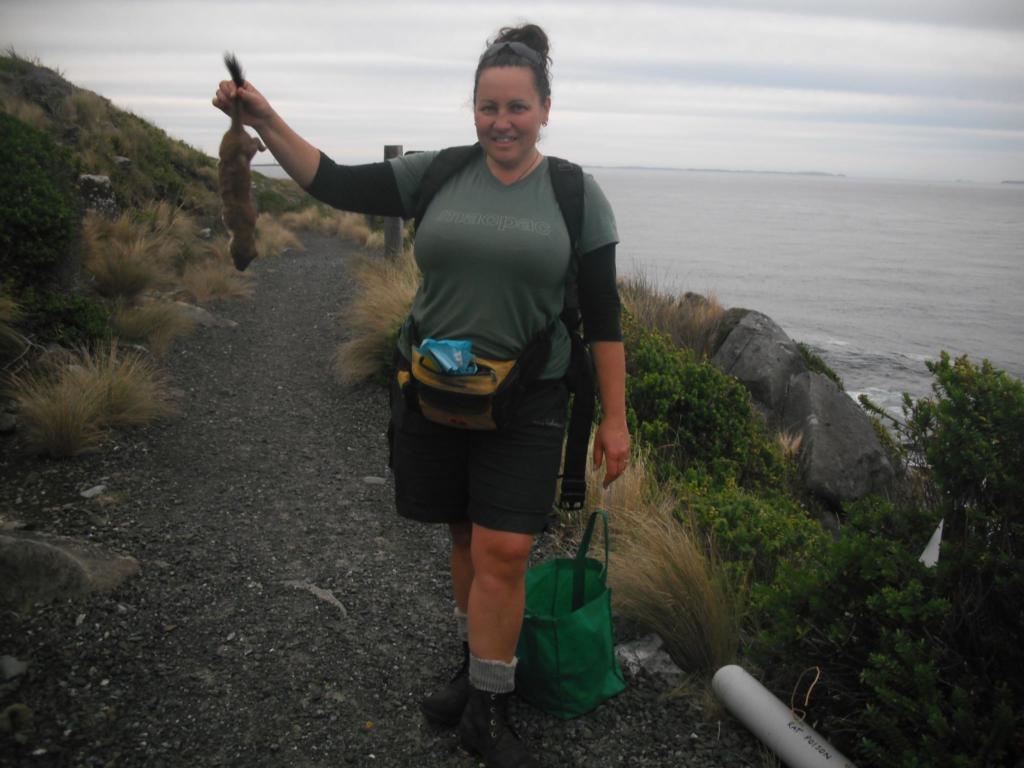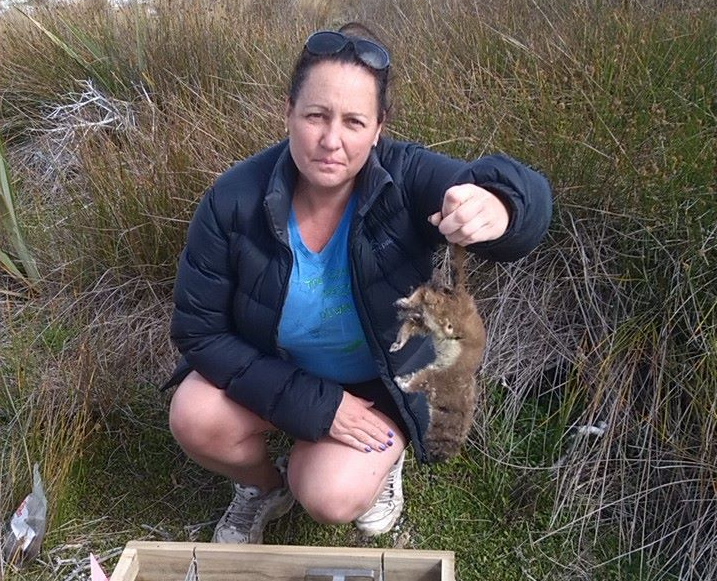Māori values, practices and stories are integral to the predator free kaupapa, and Māori knowledge and energy is crucial to its success. For International Women’s Day, we spoke to Estelle Pura Pera-Leask – a key figure bringing Māori voices and expertise to the movement. She represents Te Runanga o Ngai Tahu on the Southland Conservation Board and Te Runanga o Awarua on the Whenua Hou (Codfish Island) komiti.
Hard mahi for us and our future generations
An accomplished woman with many strings to her bow, Estelle also chairs the Bluff Hill Motupohue Environment Trust (BHMET) and works as a nursery manager for Te Korowai Whakahou Native Plant Nursery in Bluff.
And if that wasn’t enough to keep her days full, she’s also a kaiako (environmental educator) for BHMET.
“I teach tamariki (primary) and pepe (pre-school) from around Murihiku Southland about habitat restoration including predator control, species identification, seed gathering and processing.
“At the moment I’m sharing my knowledge with our BHMET staff, teaching species identification and rongoā (traditional Māori medical practices).

We’re gathering large supplies of native plant seeds in our ngahere (forest) and processing them for propagation.
“We’re sharing our seed bank with our larger Murihiku Runanga-owned native plant nursery project Te Tapu o Tāne.
“I also support our BHMET project manager with predator control techniques, best practice and technology to support our predator free Awarua project.”
The road leading to a conservation career

As a wahine Māori, Estelle says she feels an obligation and responsibility to protect our taonga species and tupuna (ancestors) through whakapapa (Māori knowledge).
“According to te ao Māori, our ancestors are the manu (birds), rākau (trees) and all that dwell in the te taiao (natural environment).
“Our taiao is not well, our whenua (land), moana (oceans), wai Māori (fresh water) are in trouble. We all have an obligation to protect what makes us unique.
“Without indigenous species, we will lose even more than we already have: Our whakapapa and rights to mahinga kai. Our obligations and responsibility as kaitiaki (guardians). Our language… And all that loss means loss of our culture and our mana.
“We can not allow that to happen. We have lost so many native taonga already.
“To me, Predator Free 2050 is more than just an ambitious goal, it is vital for the survival of the unique and treasured species of Aotearoa NZ,” she says.
Thanking the women before us, encouraging those to come
Throughout Estelle’s career, she says she faced both blatant and casual racism and sexism.
“As a wahine Māori, I have encountered many challenges in my journey. However, I have learnt to overcome them, because I do what I do for my people. I have my tupuna (ancestors) standing beside me giving me strength.
“I’m inspired by the many wahine Māori across Aotearoa who advocate for te taiao and work tirelessly in the conservation space. For many of these women, they’ve come from a background of intergenerational poverty, hardship and trauma from colonisation.
“Yet these wahine toa still understand the obligations of kaitiakitanga and protection of papatūānuku (the land).
For fellow wahine thinking of a career in conservation, Eselle’s advice is to get involved.
“This mahi is rewarding in so many ways – ways you would never imagine. You will improve your physical and mental health and wellbeing, and meet the most beautiful, passionate kaitiaki.
“You will learn to be more appreciative of the simple things in life, that also happen to be the most precious. Te mana ki te mauri o Te Taiao ki uta ki tai,” she says.

